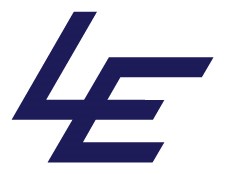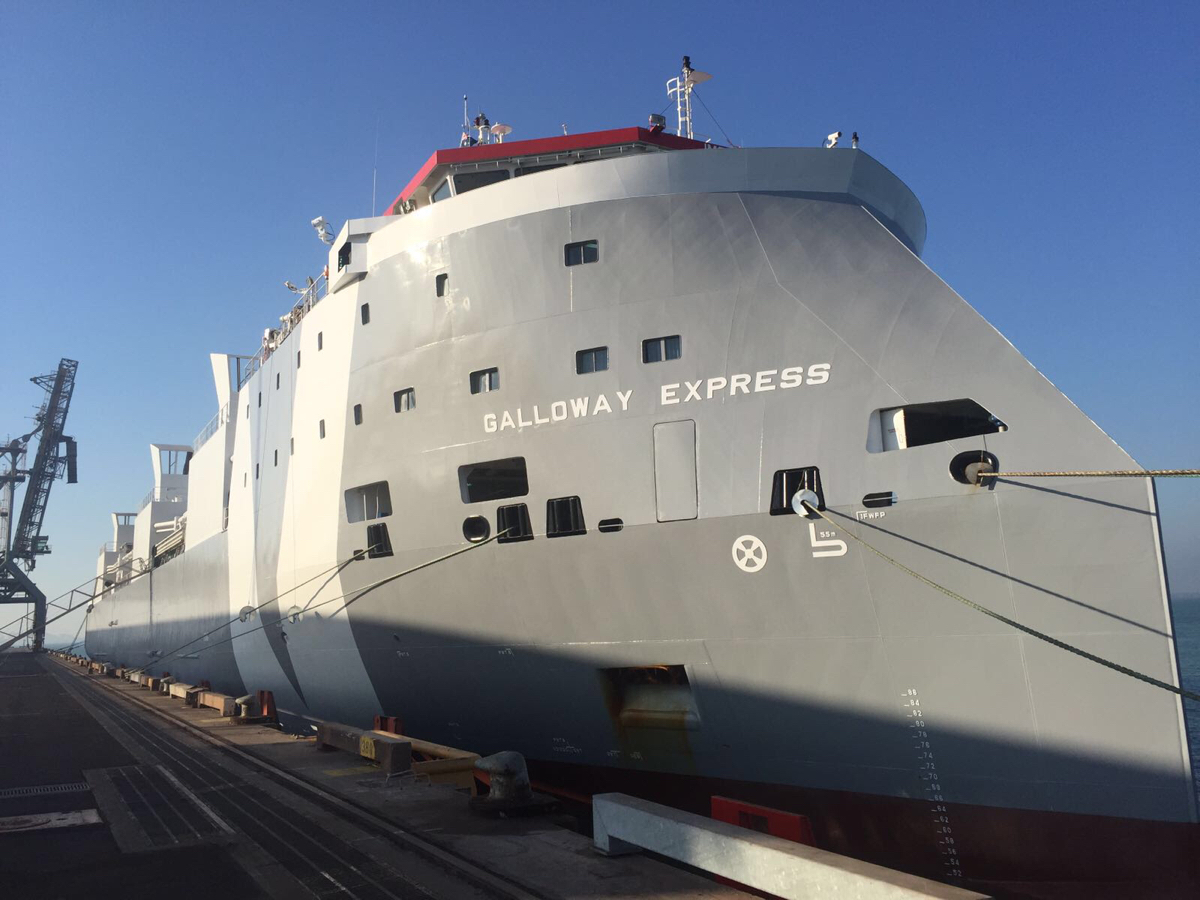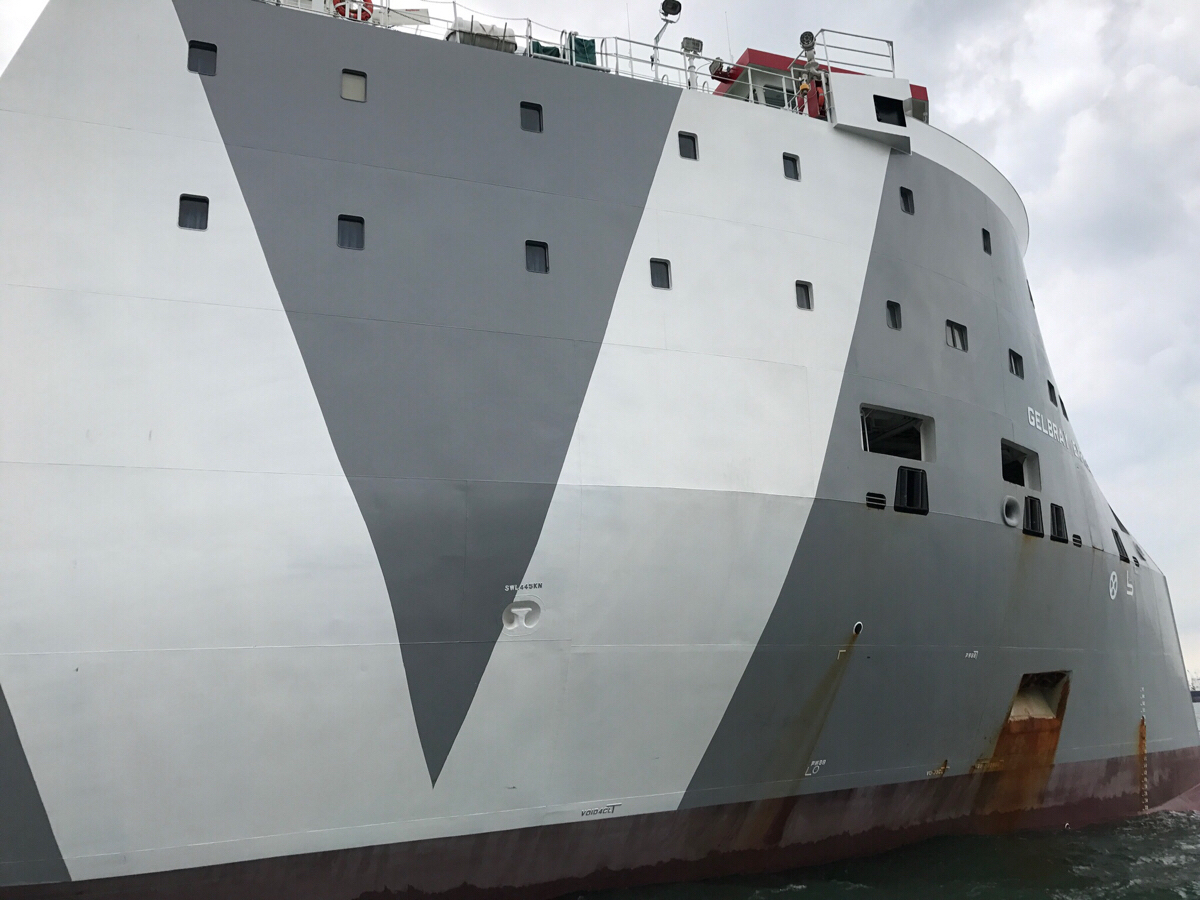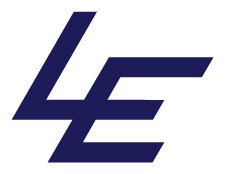Title Page
-
Vessel Name
-
Flag
-
Date started Inspection
-
Date completed Inspection
-
Date of Arrival at Loading port
Voyage Details
-
Voyage Number
-
Charterers
-
Loading Port
-
Voyage Number
-
Superintendent In Charge
-
Designated Person Ashore (DPA)
-
Vessel Operator
-
Name of Master
-
Name of Chief Engineer
Inspection Details
-
Name of Officer in Charge - Section 1 (Bridge)
-
Name of Officer in Charge - Section 2 (Steering Gear Test)
-
Name of Officer in Charge - Section 3 (Deck)
-
Name of officer in Charge - Section 4 (Engine Room)
-
Is the vessel due for PSC inspection in Australia / USA
-
Is the vessel due for AMSA Pre-Loading Inspection
Bridge
-
1.1 Charts/ENC – Valid, up to date and required for the voyage<br>ECDIS, check all charts for last voyage have license, no go area and parallel indexing are marked, position when to switch on echo sounder marked, MARPOL annex V (garbage) marked, MARPOL annex 6 ( SOX change over) position marked.
-
1.1(a) Voyage plan for the intended voyage is available and signed by all officers and approved by Master
-
1.2 Nautical Publications (eNP) – All available, appropriately completed and approved as required. Back up maintained.<br>- Admiralty List of Lights and Fog Signals ( for the appropriate area)<br>- IAMSAR Manual volume III<br>- Compass error log
-
1.3 Magnetic Compass – Easily readable and correctly adjusted (deviation card available and displayed).
-
1.4 All navigation lights, daylight signalling lamp, Shapes, sound signals including emergency lights – in working order
-
1.5 Echo Sounder – in working order
-
1.6 GMDSS radio MF / HF installation In working order and reserve sources of power fully charged, including portable VHF. Are the log books updated. Daily, Weekly and Monthly test recorded.
-
1.7 EPIRB – in working order and updated maintenance records available
-
1.8 Fire detection cabinet - Alarms in working order and NO Fault indication, sensors all active
-
1.9 ECDIS manual position fixing during the passage and during pilotage
-
1.9(a) Able to simulate vessel offset when GPS is non-functioning on the ECDIS
-
1.10 All bridge equipment are to be tested and found to be in good order
-
1.11 Ship's original class and statutory certificates are available on board, valid periodical surveys properly endorsed
-
1.12 All crew certificates, including Certificate of Competency (CoC), medical reports, flag state Certificate of Endorsement (CoE), flag state endorsement for GMDSS certificate valid
-
1.12(a) POEA available for all crew and wages regularly paid to crew accordingly
-
1.13 Availability of the ECDIS training certificate for the OOWs
-
1.14 EIAPP certificates and engine technical files are available for each engine as applicable (Indicate where the Original Certificate and Technical flies are kept)
-
1.15 Minimum Safe Manning is available and updated
-
1.16 Crew list and Muster List consistent with Minimum Safe Manning certificate
-
1.17 All crew rest hour period against log book and bell book synchronised
-
1.18 AMSA list of equipment. All equipment listed are tested and in good working condition. Maintenance records of Livestock Equipment are available and updated.
-
1.19 Official log book, departure port conditions, launching of rescue and life boats(3mths interval), closing of watertight doors are properly filled
-
1.20 Garbage Record book properly filed, shore discharge cert are available, carcass discharge has start and stop positions and compares it with mortality report
-
1.21 Cooking Oil disposal recorded
-
1.22 LRIT performance test report is available in origianl
-
1.23 Put the GMDSS into battery load. To be performed and known by all Deck Officers. (From past experience, a lot of officers do not know where to switch off the Main Power and put the GMDSS radio into the battery)
-
1.24 Are the officers able to send a test message to RCC Australia or other coast station? Are the ECG Messages and NAVTEX Sea Areas properly set up for the area the vessel is Navigating?
-
1.25 Stability records in place, with date of last calibration of the stability programme with test results, signed by Master, not more than six months
-
1.26 Permits to Work – complete with supporting documents and duly signed.
-
1.27 Servicing certificate for lifesaving appliances (lifeboats, life rafts, immersion suits etc...) are available and not expired.
-
1.28 Servicing certificates for fixed and portable fire-fighting equipment are available and not expired:<br>- Fixed CO2 / Foam / Powder systems<br>- Fire Extinguishers<br>- EEBDs<br>- Breathing Apparatus
-
1.29 Bunker delivery notes with Sulphur content are available and with sulphur percentage compatible with the voyage area
-
1.30 Training manuals up to date, emergency instructions etc... are to be written in the official language and understood by the crew.
-
1.31 Is the public address system capable of broadcasting emergency announcements?
-
1.32 Bridge window wipers checked and in working condition
Steering Gear - Tests
Using Pump no.1 - Time taken, of the rudder movement from 35 deg to 30 deg on other side ( must be less than 28 seconds as per SOLAS reg ll-1 Regulation 29 -Steering Gear.
-
2.1a Time while using the manual/hand steering ( from 35 deg to 30 deg on other side)
-
2.1b Time while using NFU (from 35 deg to 30 deg on other side)
-
2.1c Time while using bridge wing Port side (if applicable)
-
2.1d Time while using bridge wing Stbd side (if applicable)
-
2.1f Does the actual time on the steering test using Steering pump 1 coincides with the time indicated on the Wheel House Poster for One Pump Operation?
Using Pump no.2 - Time taken, of the rudder movement from 35 deg to 30 deg on other side ( must be less than 28 seconds as per SOLAS reg ll-1 Regulation 29 -Steering Gear.
-
2.2a Time while using the manual/hand steering ( from 35 deg to 30 deg on other side)
-
2.2b Time while using NFU (from 35 deg to 30 deg on other side)
-
2.2c Time for bridge wing Port Side (if applicable)
-
2.2d Time for bridge wing Stbd Side (if applicable)
-
2.2f Does the actual time on the steering test using Steering pump 2 coincides with the time indicated on the Wheel House Poster for One Pump Operation?
Using both steering pump ( 1&2) - Time taken, of the rudder movement from 35 deg to 30 deg on other side.
-
2.3a Time while using the manual/hand steering ( from 35 deg to 30 deg on other side)
-
2.3b Time while using NFU (from 35 deg to 30 deg on other side)
-
2.3c Time for bridge wing Port Side (if applicable)
-
2.3d Time for bridge wing Stbd Side (if applicable)
-
2.3f Does the actual time on the steering test using Steering pump 1 & 2 coincides with the time indicated on the Wheel House Poster for One Pump Operation?
-
2.4 Test communication from steering gear room (Sound power telephone / Electrical phone)
-
2.5 Check Gyro repeater heading in the steering gear room and compare with bridge. (state the heading)
Deck
-
3.1 Deck – must be clean and in good condition
-
3.2 Shipside Railings, beams and bulwarks – well maintained
-
3.3 Cargo holds – ensure manual water tight doors are operational and in good working order. Check frames for any hair line crack. No corrosion on the dogg cleats and able to turn easily. Hose test to be carried out.
-
3.3(a) Cable trays and ventilation ducting in cargo hold, clear of any previous cargo residue
-
3.3(b) Cargo hold bilge valves not seized. No holes in the eductor system
-
3.4 Ventilators, air pipes and casings – clearly marked and in good working condition
-
3.5 Winches, Capstans and Anchoring devices – Clear markings and in good working conditions
-
3.6 Fire Dampers, quick closing devices and means of control – clearly marked, easy to operate and free, can be closed effectively. (“Open” and “Close” marking readable)
-
3.7 Firefighting equipment and appliances – available, in place and in good working order. Ensure that a fire hose pressure testing plan in place. State the date of last test done.
-
3.7(a) International shore connection is located in accordance with fire plan and provided with gasket and bolts
-
3.8 Fixed firefighting installation – release mechanism are in good condition and with instructions in place at the remote location and local area.
-
3.8(a) Galley CO2 sysetm: Cook and Mess-man must be able to demonstrate the operation of the fix Fire fighting system
-
3.8(b) Water Mist system in good condition. State last blow through test done.
-
3.9 Rescue boat – Ensure that all equipment are in good working condition. Accumulator bottle charged and ready for operation.
-
3.9(a) Rescue boat - Secondary system for manual launching and in good working condition. Free of paint and rust
-
3.10 Life Boat & Rescue Boat Engine- Can start without difficulty, fuel tank full, lowered and manoeuvred in water every month as far a practicable.
-
3.11 Life Boat Inventory – all as required and in date
-
3. 12 Life Boat Davit – Limit switches well maintained and in good working order
-
3.13 Emergency lighting and batteries – functioning correctly and in place. Please state when was the batteries replaced.
-
3.14 Life Jackets – Correct number, correct locations, with appropriate markings and in good condition, whistle and lights well secured
-
3.15 Lifebuoys – Correct number, correct location, with appropriate marking and in good condition. Self-igniting lights working, battery not expired.
-
3.15(a) Man overboard lifebuoys are 4.5 kgs type are in proper condition with release system properly working and smoke signal and safe. When replacing new bracket, to ensure the bracket is facing in the correct direction.
-
3.16 Inflatable life rafts – clear of obstructions, hydrostatic release in date displayed. The weak link is in place. Straps and pelican hooks are not deteriorated or corroded.
-
3.16(a) Launching instructions posted under emergency lighting
-
3.17 Embarkation arrangement for survival craft – all in order as per requirements, ladder secured to strong point, ropes in good condition
-
3.18 Fire doors must be able to close tight, always keep closed. Please double check the self-closing device
-
3.19 Fire Fighting equipment – available in place and in good working order
-
3.20 Fire Control Plan – In place and up to date, crewlist updated. Is the Damage control plan readily available On board.
-
3.21 Signs , indications(weather tight doors, fire detectors, fire dampers and ventilation) – all in place as required
-
3.22(a) All navigation light, daylight signalling lamps and shapes are available, properly working and in good order
-
3.23 Sanitary facilities – Equipment in place, clean and working correctly
-
3.24 SOPEP Kit complete with inventory and in good condition
-
3.25 Fire lines in good condition and not leaking, Isolation valve marked and operational
-
3.26 Water ingress panel is properly working and faults are indicated, test button working
-
3.27 Toilets are properly maintained and flushing is working
-
3.28 Air condition / ventilation / heating are properly working
-
3.29 No open lights / exposed electric wires
-
3.30 Galley and spaces for storage of food are clean and hygienic, temperature of refrigerators and freezers are appropriate
-
3.31 No traces of wastage, corrosion, holes, no soft patches on deck and bulhead
-
3.32 Handrails are continuous and not damaged for all decks and stairs, no signs of wastage / holes on steps
-
3.33 Means of escape are free from obstructions with lighting from emergency source properly marked and in good working condition
-
3.34 Pilot ladder in good condition, no splicing between steps and with valid certificate
Engine Room
-
4.1 E/R – must be clean and in good condition
-
4.2 Ventilation, fire dampers, valves, quick closing devises, means of control. Ensure that the flaps can be fully closed
-
4.3 Maintenance of ship and equipment (PMS) and critical items
-
4.4 Oil filtering equipment/15 ppm tested and operational, ORB records updated
-
4.5 Auxiliary Engines
-
4.6 Air vents and casings
-
4.7 Thermal Oil boiler in good condition and no leaks
-
4.8 Emergency Fire Pump – Capable of being started easily and delivering sufficient pressure at hoses forward and aft.
-
4.9 Emergency Generator – able to be easily operated and connected to switchboard and be able to put on load. Quick closing valve correctly set, Oil level check. ( Please state: Total tank capacity, current capacity, low level alarm volume, FO consumption for the 18hrs)
-
4.9(a) Quick closing valve of emergency generator fuel tank is in proper working condition and properly working
-
4.9(b) Test and ensure all emergency light including cargo hold lights are operational
-
4.10 Lighting and Emergency lightings – ensure that all lights are illuminated and no water collecting inside casing
-
4.11 Safe Means of access – ensure it is adequate and without any obstruction and sufficient lighting
-
4.12 Hydraulic lines and activation levers for Watertight doors and frames in good order, opening and closing well, alarm functioning well (Audio and visual).
-
4.13 Retention of oil on board – ensure correct tanks are being used and they are emptied at port facilities
-
4.14 Jacketed piping system for high pressure fuel lines – Approved system in place and leak tank alarm in working order
-
4.15 Oil filtering equipment (Oily water Separator).<br>- 3 way valve is tested and working.<br>- No loose electrical wirings <br>- No faults on control panel<br>- No leaks on pipe lines
-
4.16 Propulsion Main Engine<br>- Engine telegraph tested and synchronised with bridge control<br>- Engine telegraph tested at local control.
-
4.16(a) Familiar with the testing of the overspeed alarm (If applicable)
-
4.17 Oil mist detector working properly
-
4.18 Signs , Indications, (Water tight doors, fire detectors, fire dampers, ventilation) - All in place as required
-
4.19 Electrical switchboard in good order and no low insulation
-
4.20 Carry out actual black out test and start all machinery from dead ship. This will include the test of emergency generator auto start and come on load
-
4.21 Critical Spares - For Machinery and Livestock services available on board
-
4.22 AMSA Spares (if applicable) - Are they listed according to the ROE
Emergency Systems
-
5.1 When was the last Emergency steering drill carried out?
-
5.2 Does the emergency source of electrical power supply its power correctly to essential equipment.
-
5.3 Fire and Abandon ship drill reports done satisfactory and recorded in the AMOS
-
5.4 Has the appropriate training carried out on LSA / FFA and other emergency equipment to all crew and are familiar with its operations.
Remarks
-
Master and Chief Engineer to follow the PSC inspection throughout the inspection process.
-
Record down any defects with picture before rectification, if any.
-
Make sure that the company number is 5362413 before signing the PSC inspection report.
-
Please hi-light and revert your findings and / or deficiencies when completing this inspection checklist.
-
Please let us know if you need any other assistance or support. Any follow up of dispensation from flag required on an equipment.
-
Additional remarks









